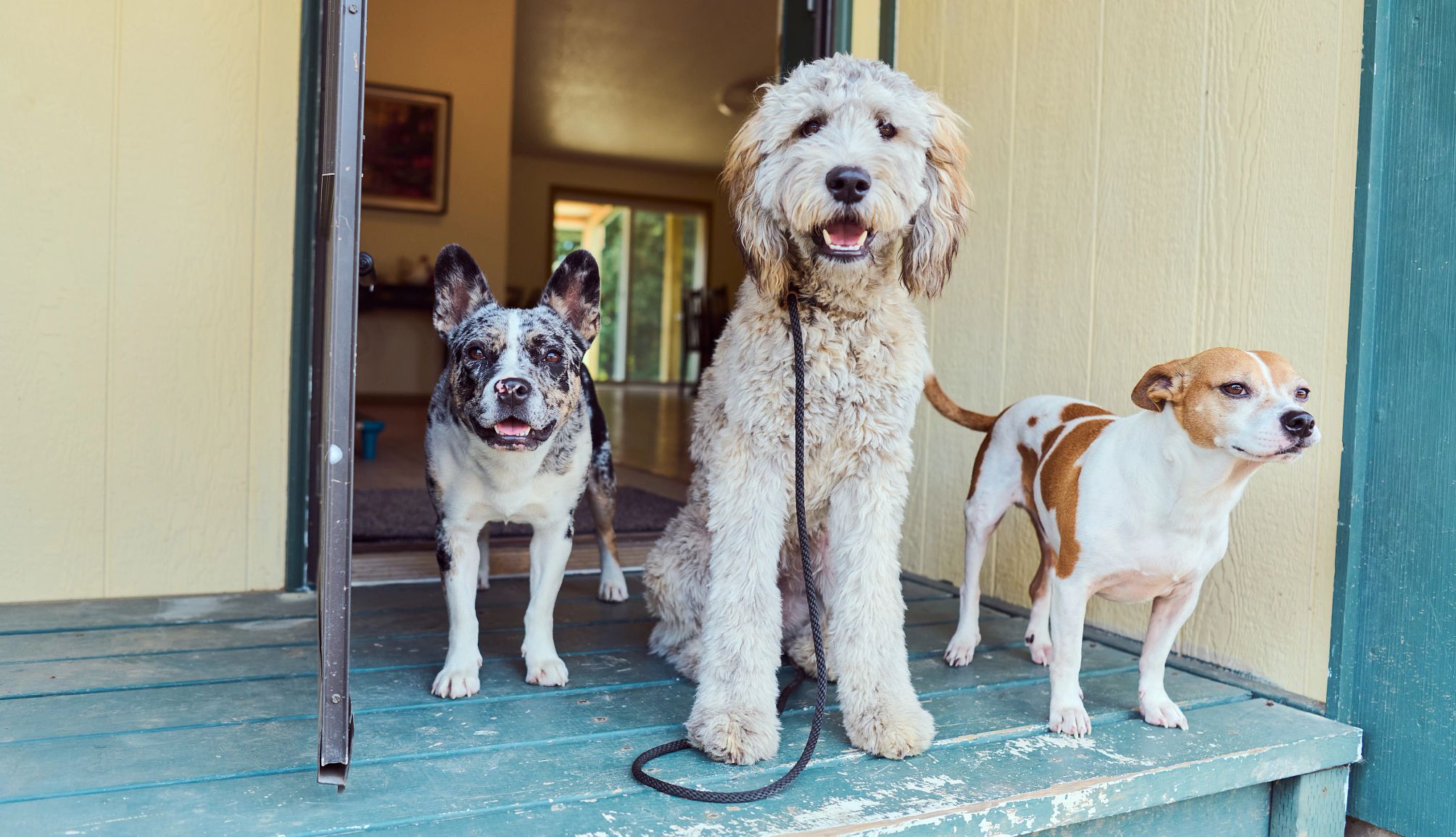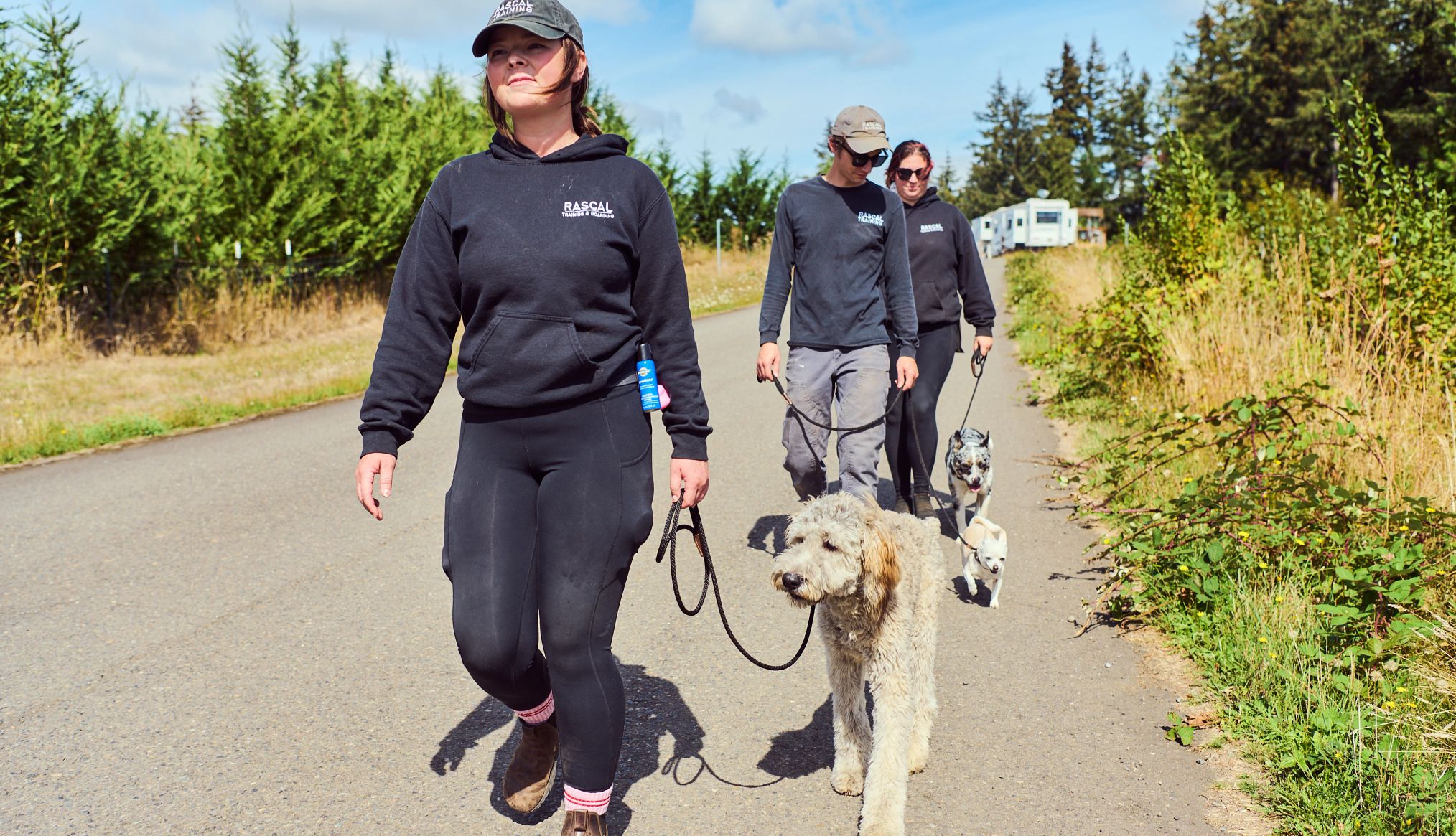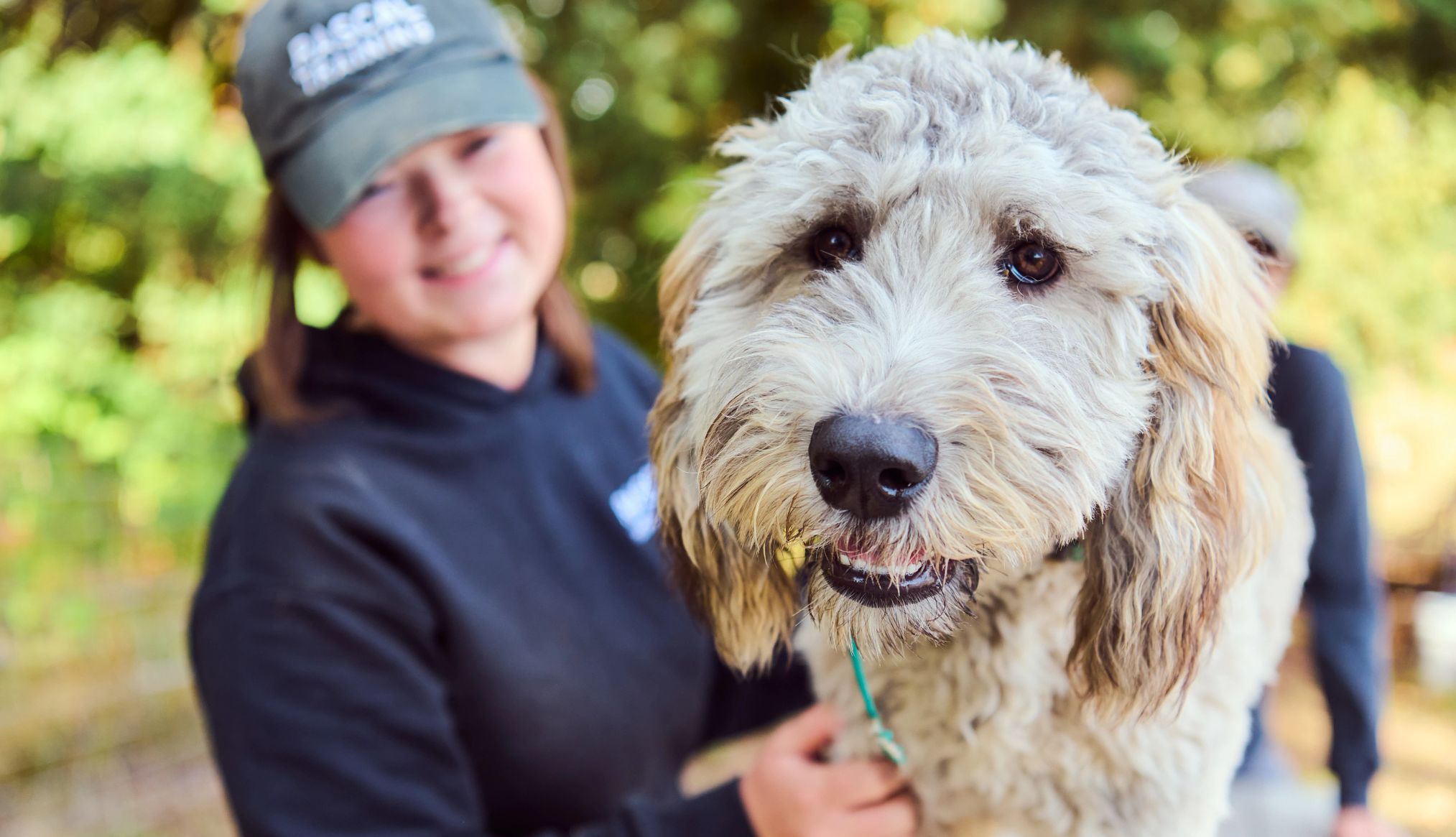AARP Hearing Center


Dog ownership is directly associated with healthy aging, according to a 2023 study published in the journal Innovation in Aging. But before you run out and get new best friend Fido, here’s a reminder that dogs usually don’t come well-trained.
That’s something Courtnee West, 47, of Gainesville, Florida, learned the hard way when she decided to add a puppy to her family.
Having had a fairly well-behaved Aussiedoodle in the past, she thought it would be smooth sailing with Aussiedoodle number two, named Dutch. And for a while, it was. “We were in that crazy, stars-in-our-eyes love phase for a couple of months,” West says. “We thought it was cute when he’d nip at our fingers.”
Then the shine wore off – and how. “He would pee and poo on the rugs. He chewed everything — our shoes … he’d steal dirty clothes out of the hamper,” says West. “People would come over, friends — we couldn’t control him. He’d jump, nip, try to get the food.”
And there is the even more dangerous side of the combination of an older adult and an untrained dog. A dog jumping can be a hazard to frail adults — who may suffer a greater injury from a fall, according to the Humane Society of the United States. And if a dog bites (60 to 90 percent of animal bites in the ER come from dogs), it can be extra dangerous for older adults more prone to infections and complications from an infection, according to a study published in The Scientific World Journal.


Things got so bad, West says, that she considered rehoming Dutch. But she decided to try one last thing: a doggy boot camp. She reached out to PepeDogs — a canine training academy in Gainesville whose website promises to “unleash the love for your canine companion.”
“When he came back he was like a different dog,” West says. “It was like somebody had flipped a switch.”
So is a doggy sleepaway training camp the answer to your dog’s misbehavior? Sometimes, but not all dogs are good candidates, experts say. And cost should be considered, because it’s usually not cheap. Here’s everything you need to know.
How to know if a board-and-train program is right for you and your pet
First, you need to be OK handing over the training to someone else and not seeing your dog for a while, says Zoe Heilman, co-owner and head trainer at Rascal Training & Boarding, which offers board-and-train programs for dogs in the greater Portland, Oregon, area.
What doesn’t matter, says Erick Innis, who served as a Navy Seal K9 trainer and owns Coastline K9 in Naples, Florida, are age, breed and size. “We do the tiniest of dogs, and we do the biggest of dogs,” he says.
But not all dogs are ideal candidates, says Linda Simon, resident veterinarian for U.K.-based healthy pet food brand Pooch & Mutt.


“The type of training a dog needs is quite individual and really depends on its personality as well as the aim of the training,” she says, adding that dogs that get anxious when they are away from their owners may “respond best to home training, where they feel more comfortable and confident.”
Certain behavioral issues are notoriously harder to resolve with a doggy sleepaway training camp because they take longer to fix, she says. Behaviors like those include resource guarding — which is when a dog becomes possessive over things that may include toys, furniture or even people. Simon says resource guarding is best addressed with a long-term training strategy carried out over months and years at home.
“Resolving the issue includes building trust, making the dog feel confident we won’t take their things and managing the environment, e.g., giving chews when in a crate and not allowing the dog on furniture,” says Simon.
Noise phobias such as fear of fireworks or traffic can also be resolved from home and generally don’t need a camp setting, she adds.








































































More From AARP
Pet Dental Care: How to Keep Your Fur Baby’s Chompers Clean and Why You Need to
Veterinarians say oral health is just as important for dogs and cats as it is for their humans
Your Veterinarian May Be Using AI to Treat Your Pet. Is That OK?
Artificial intelligence can make difficult diagnoses quickly, but there are downsides. Here’s what to knowA Sanctuary for Older Dogs Is One Woman’s Dream Fulfilled
Chris Shaughness rescues, rehabilitates and helps find homes for the older pups no one wants
Recommended for You